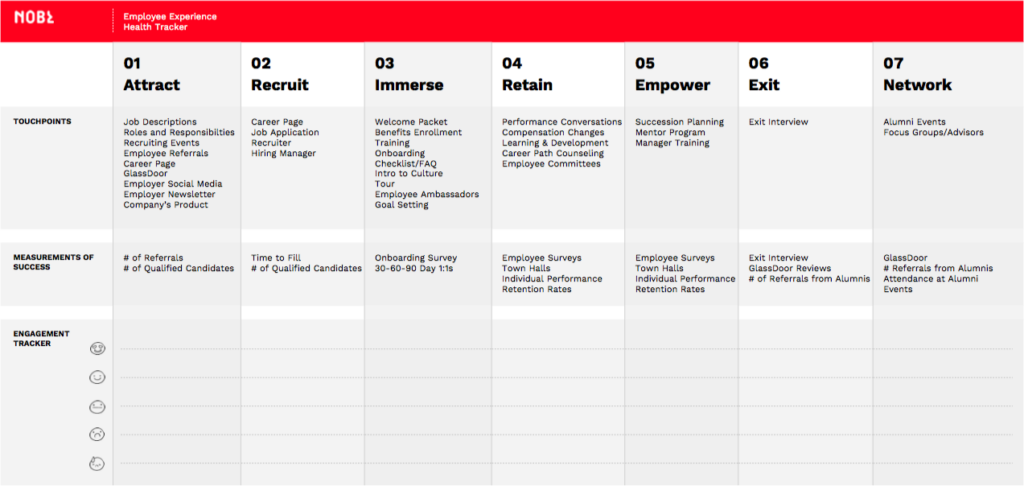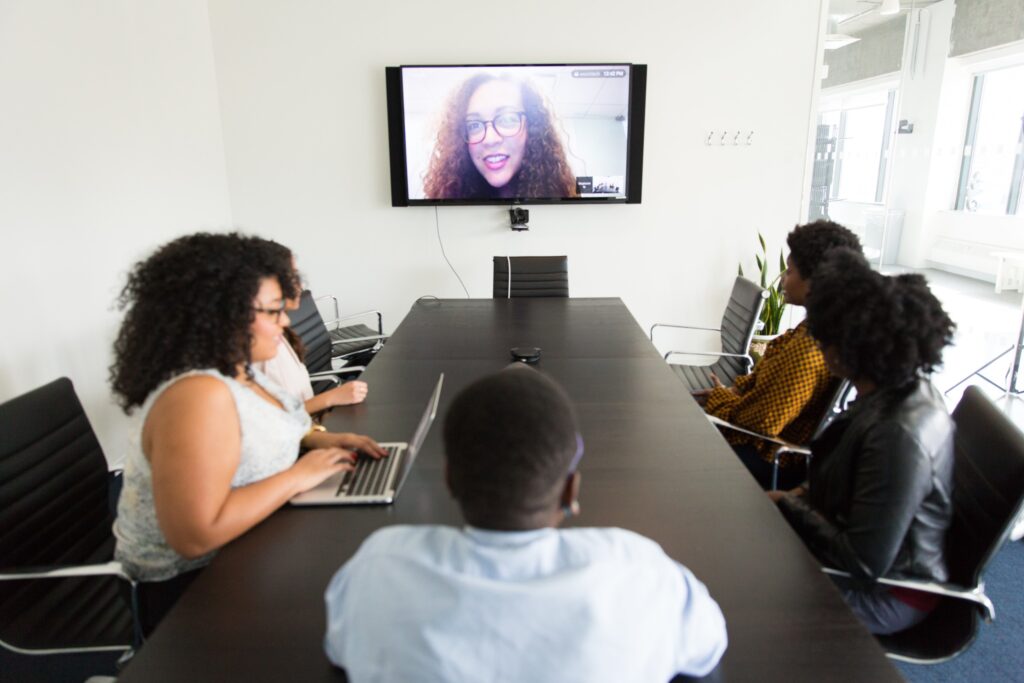“Employee experience” has become a bit of a buzzword lately, but fundamentally, it’s a perspective (rather than a plan) from which to consider all the work that falls under HR’s domain. It encapsulates the entire lifecycle of a given employee, from on-boarding and professional development, to offboarding and beyond. When you design these milestones with employees’ needs in mind, you not only create consistent, strategic approach for HR to follow, you also create an incredibly powerful tool for retention.
Build an Employee Experience Health Tracker

One of the simplest ways to start improving the employee experience is to map out the high and low points.
- Assemble a cross-functional team. Set aside 90 minutes for a working session with your HR team and a couple of your strongest employee culture ambassadors. HR should be the champion for change, but your colleagues in IT, facilities, and of course leadership, also play a huge part in lining up to employee experience strategy.
- Create the framework. On a whiteboard or large sheet of paper, make a timeline of the key stages employees experience at your company (for instance, Attract, Retain, Engage, Exit). Take a look at our simplified Employee Experience Health Tracker if you need more inspiration.
- Fill in the engagement blanks. Based on feedback you’ve heard, survey data, and so on, identify: What elements in the journey are working well (list next to the happy face)? What’s not (list next to the sad face)? What’s missing (list in the middle)?
- Bonus points. If you’re feeling ambitious, consider your “culture mascot:” how does your employee experience support the culture you aspire to be?
- Start small. Now that you’ve got a comprehensive view, what area needs the most attention? Pick one specific area or employee population to test out improvements:
- What can you try to improve the experience?
- How will you test out your idea?
- How will you collect feedback?
- If the experiment is successful, how will you scale it?
- Keep evolving. Build feedback loops into your process to see if the tweaks you’ve made are improving overall employee experience—we recommend reviewing progress at least quarterly.













